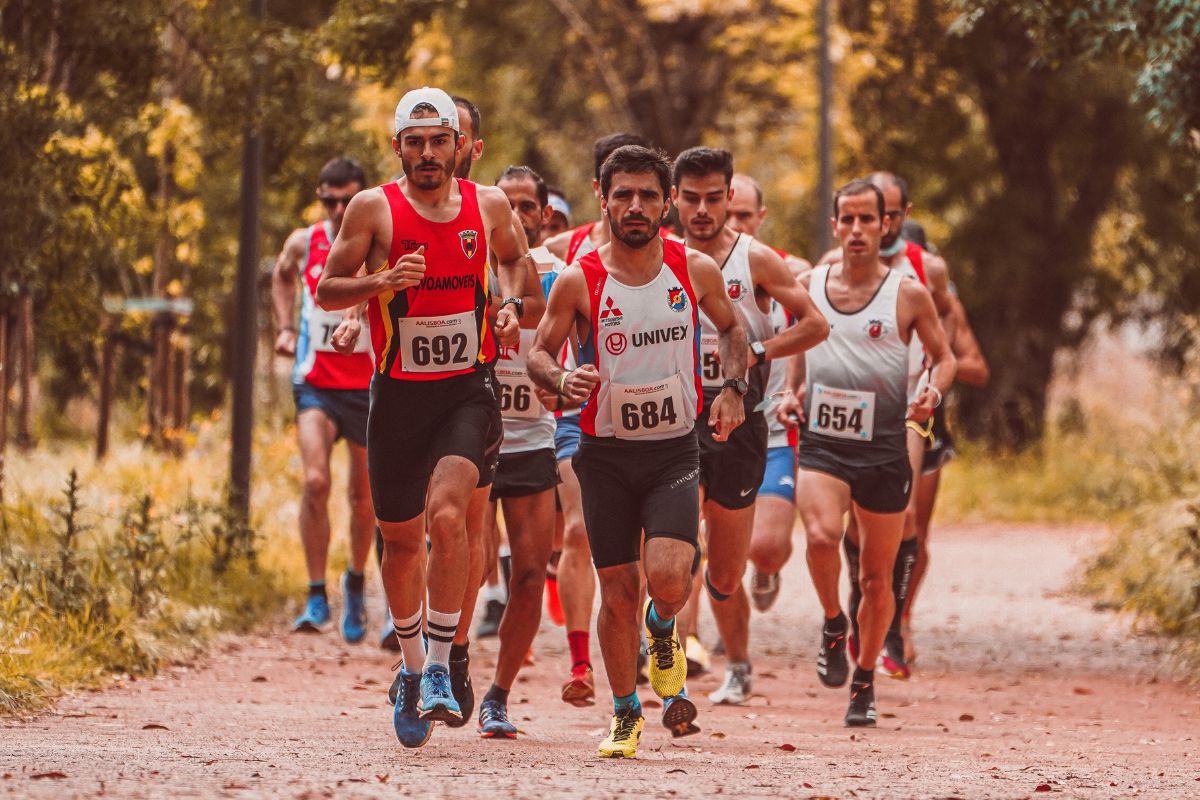Cross-country running is often associated as something we did at school, and whilst it likely felt like a chore then, now we love it.

Whilst that might take a minute to process, it doesn’t mean that you remember how long the race is.
Easily done, however, as it felt like a long time back then.
However, cross-country running has many different lengths, from 8km to 12km, depending on the competition level and gender.
So, before you get those trail shoes ready to take on the muddy puddles and rocky terrain, let’s take a look at how long cross-country races are, and everything you need to know before taking part in one.
What Actually Is Cross-Country?
If you like to run over natural terrain competitively, then cross-country is a good sport to partake in.
The runners, also known as harriers, run long distances through an open air style track.
The fun thing about cross-country is that it challenges not only your athletic skill when it comes to running, but your overall endurance.
You will need to master the skill of running in the worst possible conditions whilst still doing your best.
For example, most cross-country competitions take place during the fall or winter time, meaning the conditions might be a little tough.
From rain and snow, to the cold, you will need to battle alongside these weather conditions whilst going up hills, grass, gravel, and mud.
The Different Cross-Country Distances
When it comes to the distance of a cross-country run, the answer all depends on a number of different factors. So, let’s take a look at them:
Middle School And High School Distance
When it comes to middle school the cross-country run is 2 km. In a high school, the distance jumps up to 5 km.
US College
When it comes to a United States college, the distances can vary depending on your gender.
For example, women usually run either 5 or 6 km, whilst the men run from 8 km to 10 km.
Competition Level
When it comes to competition level cross-country, you will notice that the distance jumps dramatically for men, and stays pretty much the same for women.
For example, the men can run a distance of anywhere from 10 km to 12 km, whilst for women it is 5 km.
How Does Cross-Country Differ From Track?

Whilst you might be thinking that both track and cross-country are similar, there is actually one difference, and that is the location of the race.
Cross-country is taken part in an open-air style course that embraces rocky terrain, making sure it stays difficult.
Track on the other hand is a regulated race that is either outside or indoors, on a smooth ground, normally held by a school or racing organization.
Why Is Cross-Country So Fun To Do?
Whilst traditional racing is on flat land and involves a lot of high stress, cross-country is much more fun.
It involves a challenge on ground that you might struggle to run on, and that is all a part of the fun.
The route will likely be something you haven’t run before, making it exciting.
Also, you are likely to have mud and dirt all up your legs and arms, and that is absolutely fine.
Not only that, whilst generally long in distance, it probably won’t take more than an hour to complete.
You will have such a big adrenaline rush that it will make you want to run it again.
Are There Any Tips To Getting Trained For A Cross-Country Race?
Before you take part in a cross-country race, here are a few things to think about:
Practice
Whilst running through the local neighborhood on flat ground is fine, you will find that once you are running cross-country, the hills and uneven terrain is a lot more challenging.
So, the best thing you can do is to practice running up hills and on mud.
This means that you cannot solely run on the treadmill either, as you will need to get a hang of running over uneven flooring, otherwise you likely won’t enjoy the experience, or do well.
Pace Doesn’t Matter
As a runner, it isn’t surprising that you have spent years tracking your pace.
However, it is much harder to do when it comes to cross-country because of the uneven terrain.
In fact, all those numbers will go out the window because what you will find is that pace isn’t as consistent.
Instead, concentrate on the running at hand and how your feet feel over the grass and mud.
As you become more experienced, then start thinking about your pace. At this point, you will understand your fitness better too.
Shoes Are Important
The last thing you want is to have an injury mid-run. That means it is important to wear appropriate shoes.
Whilst regular running shoes are ideal for a flat race, it isn’t the same for cross-country.
Instead, look at trail running shoes or ones with spikes. It gives you extra grip on slippery terrain, and will make sure you don’t cause yourself an injury.
Give Yourself Plenty Of Time
Cross-country is a long race, and something that you cannot train for with a month to go.
Give yourself plenty of time to work up to the distance. Some cross-country runners even spend a year practicing – so think about that!
Final Thoughts
Cross-country is an exciting race to partake in for many reasons. Not only is it competitive, but also challenging which will only add to the overall excitement of it.
Whilst something like track was fun to do at school, cross-country is a step-up.
Rather than running on a well organized flat route, cross-country is all about making your way through mud, grassy and rocky terrain, hills and whatever else is on the route.
This makes it extra challenging and fun to do.
So the next time you have a chance to take part in a cross-country race, go for it!
- Can Dogs Run Faster Than Humans? (Running With Your Furry Friend) - October 4, 2022
- 10 Doggie Fun Runs You Will Love [Ultimate Guide] - October 4, 2022
- What Are Division Results In Running? - October 4, 2022








